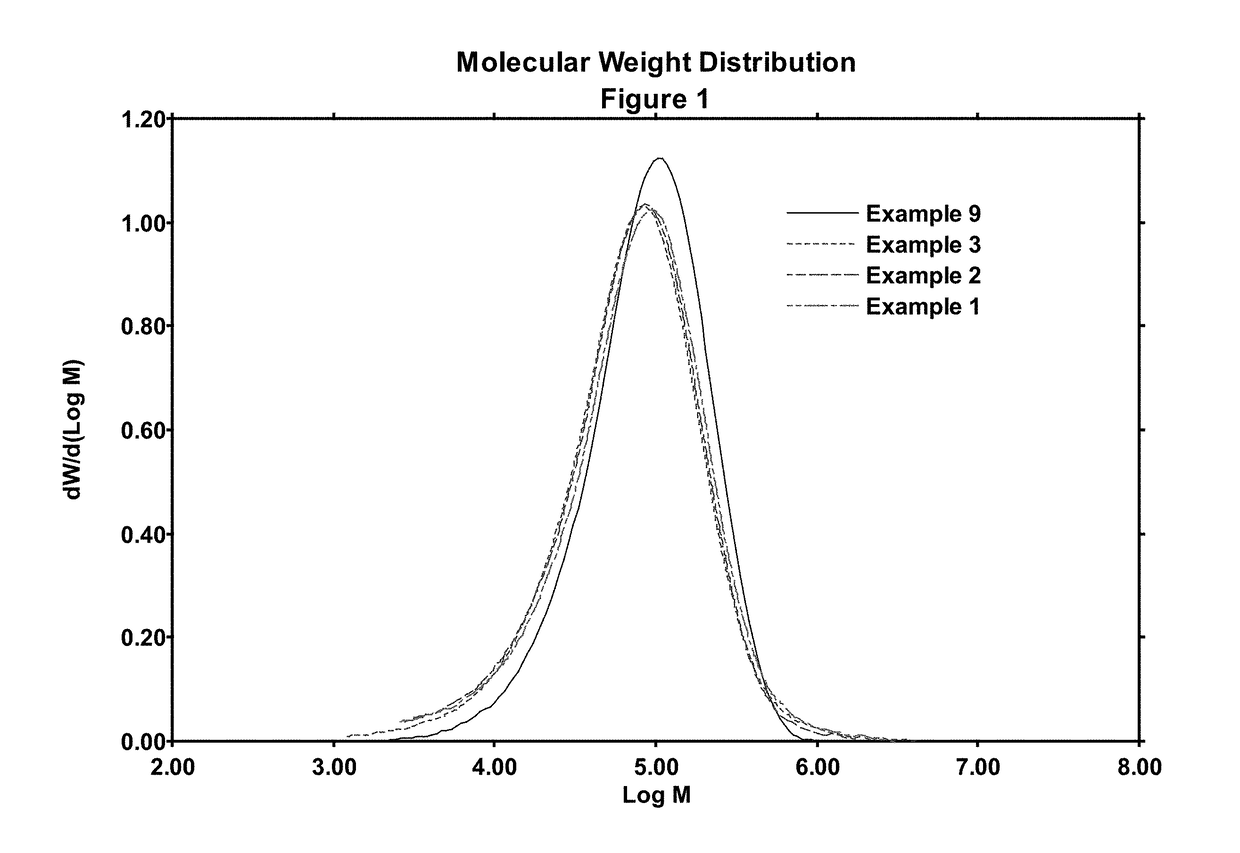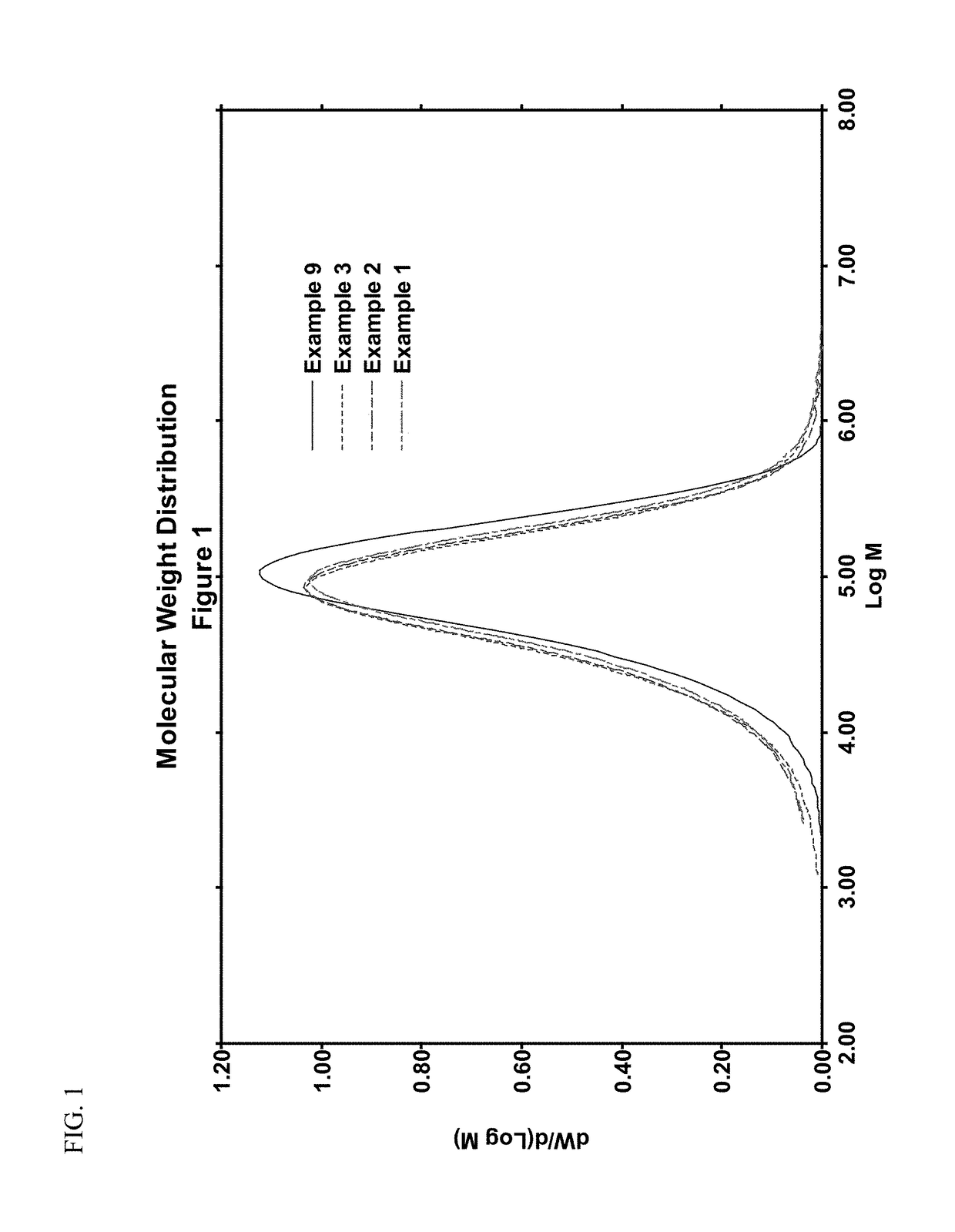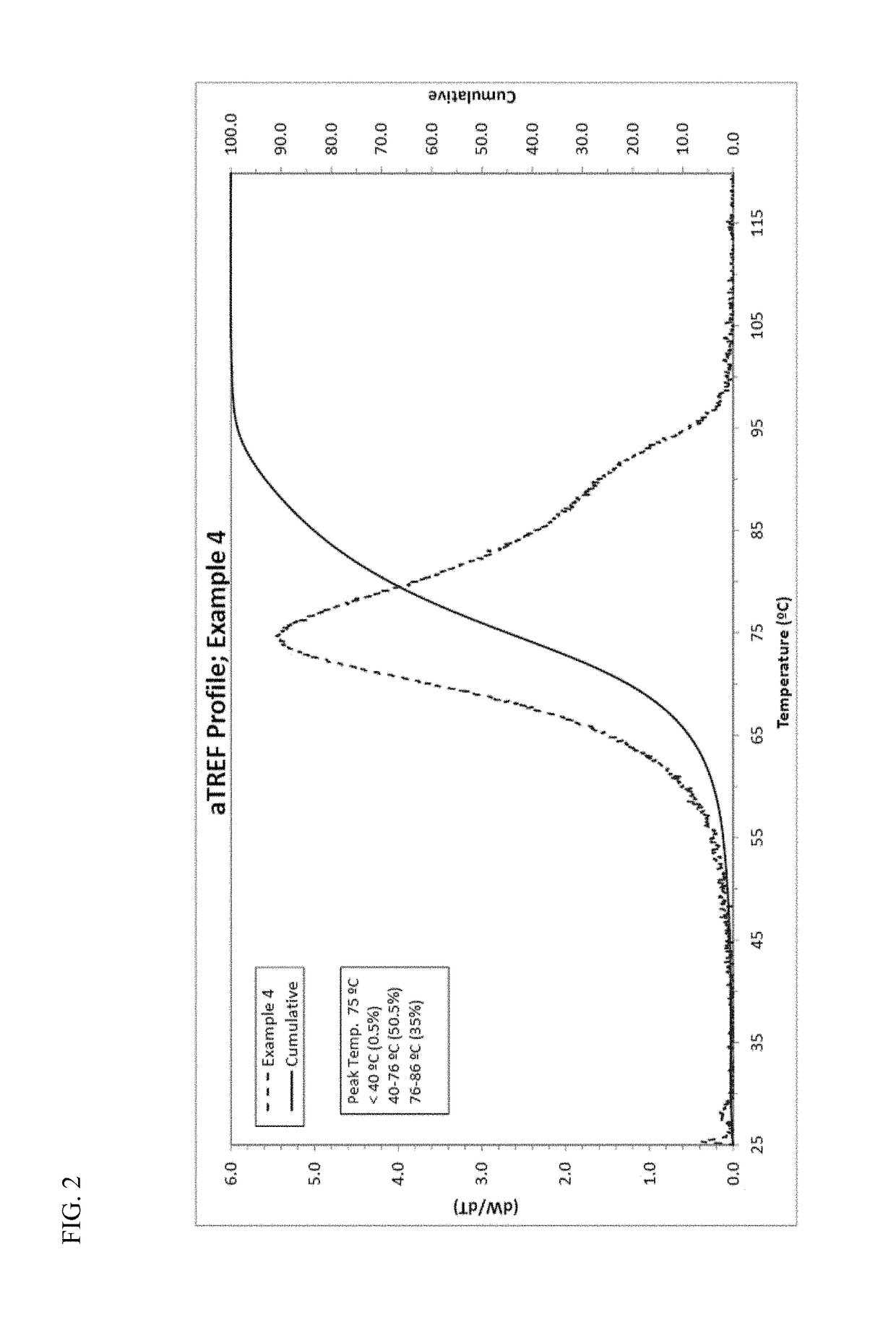Dual catalyst system for producing LLDPE copolymers with a narrow molecular weight distribution and improved processability
a catalyst system and molecular weight technology, applied in the direction of lldpe copolymer production system, dual catalyst system, etc., can solve the problems of poor extrusion processability, melt strength, and bubble stability,
- Summary
- Abstract
- Description
- Claims
- Application Information
AI Technical Summary
Benefits of technology
Problems solved by technology
Method used
Image
Examples
examples
[0128]The invention is further illustrated by the following examples, which are not to be construed in any way as imposing limitations to the scope of this invention. Various other aspects, embodiments, modifications, and equivalents thereof which, after reading the description herein, may suggest themselves to one of ordinary skill in the art without departing from the spirit of the present invention or the scope of the appended claims.
[0129]Melt index (MI, g / 10 min) was determined in accordance with ASTM D1238 at 190° C. with a 2,160 gram weight. Polymer density was determined in grams per cubic centimeter (g / cm3) on a compression molded sample, cooled at about 15° C. per hour, and conditioned for about 40 hours at room temperature in accordance with ASTM D1505 and ASTM D4703.
[0130]Molecular weights and molecular weight distributions were obtained using a PL-GPC 220 (Polymer Labs, an Agilent Company) system equipped with a IR4 detector (Polymer Char, Spain) and three Styragel HMW-...
examples 1-14
[0150]Examples 1-8 were produced as described above. Comparative Examples 9-11 and 13-14 were commercially-available LLDPE (ethylene copolymer) resins from Chevron-Phillips Chemical Company LP, while Comparative Example 12 was a commercially-available LLDPE (ethylene copolymer) resin from The Dow Chemical Company.
[0151]Table II summarizes certain information relating to the polymerization experiments of Examples 1-3 using dual catalyst systems containing a transition metal imine phenolate complex (CAT 1) and a metallocene compound (CAT 2). The respective amounts of CAT 1, CAT 2, sulfated alumina, hydrogen, and 1-hexene are shown in Table II, as well as the weight of the polymer produced. Table II also lists the melt index, density, zero-shear viscosity, CY-a parameter, and certain molecular weight characteristics of the polymers of Examples 1-3. FIG. 1 illustrates the molecular weight distributions (amount of polymer versus the logarithm of molecular weight) for the polymers of Exam...
PUM
| Property | Measurement | Unit |
|---|---|---|
| temperature | aaaaa | aaaaa |
| zero-shear viscosity | aaaaa | aaaaa |
| temperature | aaaaa | aaaaa |
Abstract
Description
Claims
Application Information
 Login to View More
Login to View More - R&D
- Intellectual Property
- Life Sciences
- Materials
- Tech Scout
- Unparalleled Data Quality
- Higher Quality Content
- 60% Fewer Hallucinations
Browse by: Latest US Patents, China's latest patents, Technical Efficacy Thesaurus, Application Domain, Technology Topic, Popular Technical Reports.
© 2025 PatSnap. All rights reserved.Legal|Privacy policy|Modern Slavery Act Transparency Statement|Sitemap|About US| Contact US: help@patsnap.com



